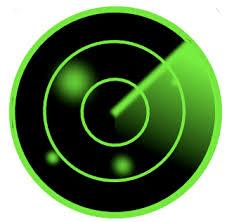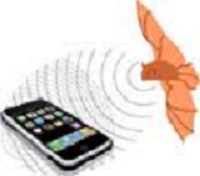Submarines have used sonar for decades. Dolphins and Bats have used it for millions of years. And thanks to a little math, humans could soon be echo-locating with their mobile phones.

At Ecole Polytechnique Federale de Lausanne (EPFL), in Switzerland, experts in signal processing discovered a mathematical technique that allows ordinary microphones to ‘see' shape of a room by picking up ultrasonic pulses as y bounce off walls. Work was published in this week's edition of journal Proceedings of National Academy of Sciences (PNAS).
Echolocation with Microphone is harder than it sounds. Ambient noise in any room interferes with sounds used to locate walls, and echoes sometimes bounce more than once. There is also added challenge of figuring out which echoes are bouncing off which wall.
As said by Ivan Dokmanic, Bats have had millions of years to grow specialized neural-circuits to fine tune their echolocation abilities, a doctoral researcher and lead author of PNAS paper. He further added that humans can echolocate it too, though not as precisely. Several blind people have verified this ability.
One rationale echolocation is easier for bats and humans than it is for a computer is that bats and humans having skulls that filter sound. Tracking where a sound originates is easier for humans because people's two ears hear slightly different things. This allows humans to pinpoint origin of a sound.
To enable echolocation in mobile devices, Dokmanic investigated math behind echolocation. What he found was that it's possible to treat echoes of sounds emitted by a speaker as sources, rather than as waves bouncing off of something.
It's kind of like what happens when you look into mirror: Your eyes see a reflection, but there is illusion that there is another person who looks just like you standing at precisely same distance from mirror.
That's what Dokmanic did with sound. He supposed that every echo was a source and created a kind of grid known as matrix, of distances. Utilizing some advanced math, he was afterwards able to create an algorithm that could group echoes in correct way to deduce shape of a room.
First, team experimented with an ordinary room at EPFL, using a set of microphones and a laptop computer to test whether algorithm worked. It did, and their next step was to test their program in real world. Therefore, they went to a cathedral and tested it there.

"It was really opposite environment," Dokmanic said, adding that unlike a controlled lab setting, a cathedral has a lot of ambient noise and space isn't perfectly square.
Algorithm worked re too, showing that echolocation scheme could detect cathedral's walls. " Innovation is in way that they process signal to calculate shape of room," said Tommaso Melodia, an associate professor of electrical engineering at University at Buffalo who was not involved in study.
Martin Vetterli, professor of communications systems at EPFL and a co-author of paper, said that mobile phones could be used to locate people more precisely. One problem with getting anyone's precise location on phone is that only certain frequencies penetrate building walls, so GPS signals are sometimes useless.
Moreover, GPS is not always precise - if re is a lot of interference, it is not uncommon for a phone to say it cannot locate you more precisely than within a half mile. Wi-Fi could work, but it depends on existence of a local network.
Echolocation partly solves that problem, because it can measure distance from where a user is standing to walls of an individual room, and send that more precise information to tell network exactly where that person is located. Instead of knowing where someone is within a city block, you would be able to see that s/he is within a room of a certain size or is surrounded by walls that give an intersection a certain shape.
One or issue is distance between two microphones on a mobile phone. Many mobile phones have two mics - directional mic is used when it's pressed to your head while you're on a phone call, and or is used for cancelling out ambient noise.
Two microphones on a phone calculate distance by triangulating - measuring small gap between when an echo reaches each microphone. Distance between microphones is base of a triangle, and time difference between echoes' time of arrival tells you length of or two sides.
But se two microphones usually aren't very far apart on phones, so calculating distance to a source that's far away is harder to do.
One solution, Vetterli said, might be to use people's tendency to walk with their phones in order to help echolocate walls more accurately.
Since you can't make phones much bigger, it is simpler to have phone take measurements from more than one spot as user walks with it, so base of triangle is longer, he said.